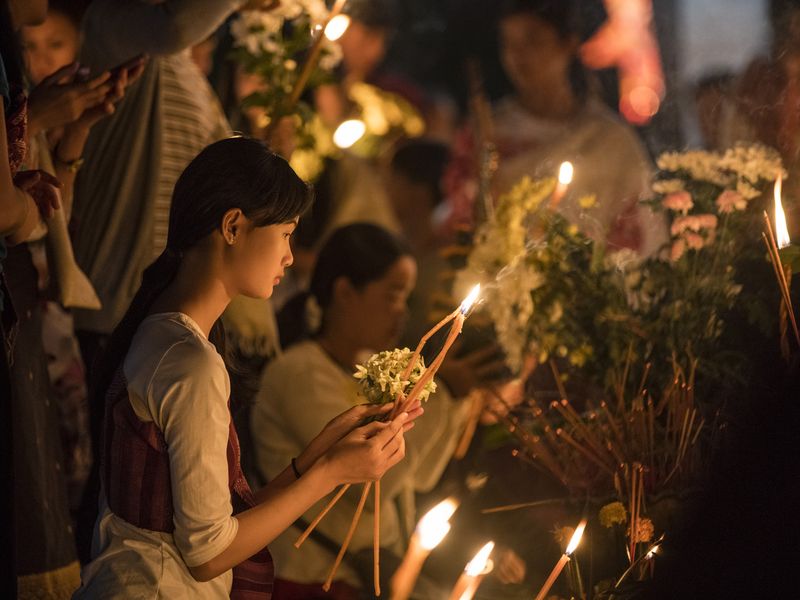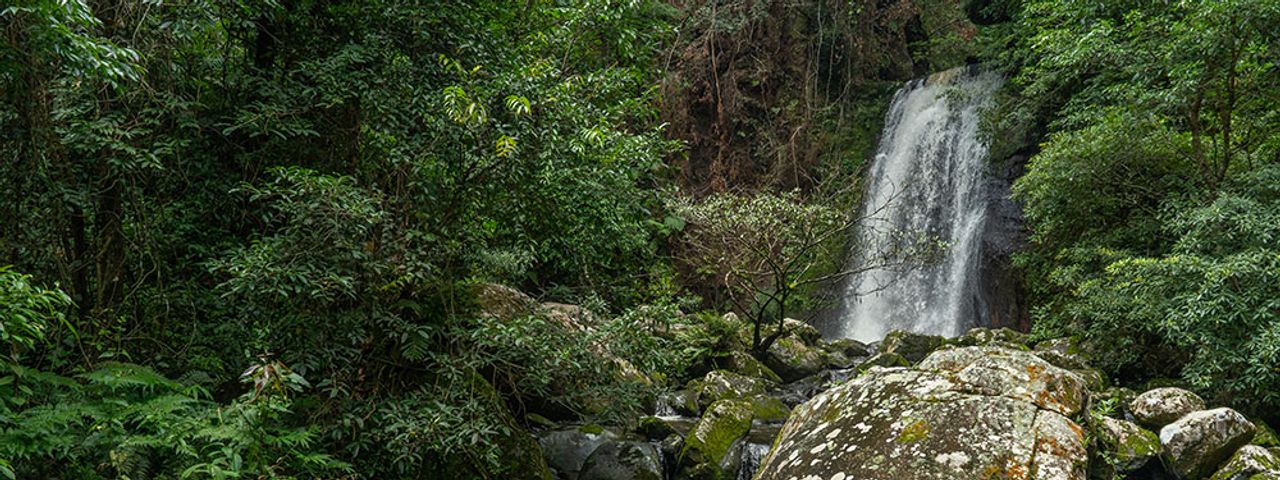Laos Unlocked
When Selective Asia’s Lionel first set foot in Laos over 20 years ago, he was completely bowled over by this low-profile treasure of a destination, and this is still how we feel every time we visit. Laos’ complex history, stunning scenery, hospitable charm and flavourful food with a French twist are as refreshing and vibrant as ever, tempting us to dive in deeper on each visit. This is a country that’s worth taking time to get to know, and travelling overland by rail, road and boat, rather than making quick hops by plane, lets the ever-changing landscape become part of the adventure.
So, what does our ideal overland journey through Laos look like? From the elegant capital Vientiane, head to the enigmatic north east, including nature-focused Vang Vieng and the extraordinary ‘Plain of Jars’. Explore mountainous San Neua and the Vieng Xai caves, along with far-flung Nam Et National Park and a trip along the Nam Ou River to picturesque Nong Khiaw. Take a sojourn in Luang Prabang followed by some proper R&R in the south, exploring the lush Bolaven Plateau and island hopping through picturesque Si Phan Don, the 4,000 islands.
Taking the time to travel through Laos by land unlocks the country’s rhythms and culture at a deeper level. Vientiane and Luang Prabang have gained higher international profiles over the years, but venture slightly off the main routes and life in timeless Laos continues much as it has always done.
This isn’t a place to speed through, but somewhere to pause frequently and allow yourself to settle into the different landscapes and heritage before moving on, bearing witness to the country’s complicated (and sometimes heart-breaking) recent past along the way.
Bankside culture & BBQs
The Laotian capital, Vientiane, is one of those places where it can be tempting to focus, rather unfairly, on what it’s not. With a population of less than a million, it certainly isn’t Bangkok, or any of Asia’s other mega-capitals, and closer to home it’ll never equal Luang Prabang as a historical and cultural centre. Nevertheless, this distinctive ‘village city’ has a character all of its own and is a great place to start your love affair with Laos. Stroll down streets where French-Colonial architecture rests side-by-side with gilded temples. Begin contemplating Laos’ tragic past at the COPE exhibition centre, which highlights the country’s day-to-day struggle with unexploded ordnance left over from the Vietnam War era. Take artsy photos at the quirky Buddha Park, and have your first sin dat (a communal, Lao-style on-table BBQ) in the night market, all without having to dodge endless streams of tourists along the way.
Natural beauty
Vang Vieng once had a bit of a rowdy reputation as a run-to party spot for backpackers, but recent years have seen the town transform into a conservation-focused natural haven, supporting small local communities in the area to preserve and protect their traditions and culture. Trek through verdant rice fields and meet local farming families who have been working the land in rural Laos for generations.
Discover how local knife smiths make blades using traditional metalworking techniques, taste home-brewed rice wine created in local kitchens, and get together to prepare and enjoy a hearty meal. To see the best of Vang Vieng, stay in a peaceful property just outside the town, and take a moment to settle into the region’s relaxed rhythms.
Lovely Luang Prabang
Hop aboard the Laos-China railway to glide past rolling hills and rice paddies to Luang Prabang. With a prominent position atop the list of Asia’s most striking destinations, this is a city that encapsulates much of what we love about Laos. Many main streets juxtapose traditional Laotian architecture with more recent colonial-style buildings, so the breadth of the city’s history is always on show. In the labyrinthine backstreets, life remains quieter, underpinned by the daily rituals of monastic life.
This is a city that has undeniably jumped towards modernity, with visitors staying in ever-more lavish hotels, dining in multi-national restaurants, and experiencing the rowdy joys of live music and a Beer Lao (possibly the greatest Asian beer) down by the river. Three, four or even five days here gives you time to take it all in, with our local guides always on hand to show you everything their city has to offer. We highly recommend enjoying a proper local evening out in the city, including a game of petanque - a favourite national pastime.
Boat trips & Buddhas
Leave Luang Prabang to hop in a boat and meander along the mighty Mekong, through some of the country’s most striking terrain. This section of the wide waterway bends itself between jagged mountains covered with dense vegetation and sprinkled with clouds. Cruise sedately past isolated rural communities, soaking up the peaceful, pastoral scenes, as the river flows towards the Pak Ou Caves, where thousands of Buddha statues sit in the calm coolness.
Further north still, Nong Khiaw is a remote town with just the right mixture of sleepiness and bustle. This remote spot lends itself to walking, from gentle strolls to viewpoint hikes, or simply relaxing on the riverbanks with a plate of delicious laab - a salad of fresh herbs and finely ground meats - and a cool drink in hand.
Welcome to the jungle
Another remote part of little-known Laos, the Nam Et-Phou Louey Protected Area is the largest area of its kind within the country. This is a region of high biodiversity, home to clouded leopards, golden cats, gibbons, countless species of reptiles, and an array of birdlife, not to mention an elusive population of tigers. Whilst many of the larger inhabitants tend to stay hidden in areas of almost impenetrable jungle, there is still always plenty to see.
Slightly counter-intuitively, the best time to ‘see’ wildlife is often after dark. As you float down the river on a night safari, under a star-bedecked sky, your local Khmu guide and boatmen, armed with only their sharp eyes and a spotlight, will reveal an array of nocturnal creatures. Sleeping arrangements are basic, and it’s definitely not a ‘glamping’ situation, but you can enjoy dinner around the campfire before being gently lulled to sleep by the jungle soundscape.
Tranquil landscapes & thought-provoking history
Wend your way leisurely, and carefully, along the roads to remote Sam Neua. The drive might be long, but the views of the mountains and glimpses of traditional life are extraordinary, and elements that few visitors to Laos ever hear of, let alone see.
The town itself has local shops and markets aplenty, but the real attractions lie in its surroundings. Traditional villages, including Hmong and Khmu communities; enigmatic menhirs, or standing stones, in the village of Hintang; and the eerily atmospheric Vieng Xai caves, where an incredible 23,000 Laotians sheltered during nine years of aerial bombardment in the Vietnam War. The history is undeniably poignant, perhaps even more so when juxtaposed with the serene limestone karst scenery.
A jar-dropping mystery...
One of Asia’s most enigmatic sites, the UNESCO listed ‘Plain of Jars’ is certainly aptly named. This plateau, where thousands of mysterious stone jars lie scattered, is thought by many to be over 2,500 years old, and the largest jar stands, staggeringly, almost 10ft high. It’s certainly not the easiest place to reach, but well worth the journey, with plenty of time to rest in the relatively simple accommodation available in the area. Spend plenty of time marvelling at the jars themselves, speculating on their origins, visit the MAG (Mine Advisory Group) Centre to learn more about the crucial work of clearing the country's thousands of undetected mines and unexploded ordnance, and learn about the inspirational Lone Buffalo community education project.
Tranquility in the heart of Laos
Central Laos holds an air stillness and contemplation among its gently rural rhythms. Still recovering from the destruction of recent history, the region’s more ancient history sits alongside contemporary agricultural village life.
Explore ancient Lanna-style pagodas in Muang Khoun, the former provincial capital; step inside the ruins of Wat Phia Wat to see the huge sitting Buddha; and relax in the restful riverside surroundings of Hin Boun. See the region from a different perspective floating through the incredible 7km Kong Lor Cave, where magnificent stalactites and stalagmites adorn the walls where they have formed over eons in the echoing caverns.
Look out over the landscape from a rocky viewpoint en route to Thakek, taking in the timlessness of the region. This is an area of protected forests, deep blue lakes, imposing limestone karsts and shady caves. Trek through the 200 metres of Pa Chan cave and weave through the forest to Nam Don River Cave, where the water flows right out of the cave mouth: ideal for relaxing by the banks or cooling off with a refreshing swim.
Serene Si Phan Don
A sandy beach in a completely landlocked country? Whilst we wouldn’t suggest Laos for those looking for a more traditional sun and sand holiday, there are few better places than Si Phan Don (also known as the 4000 Islands) to relax at the end of a Laos escapade. These islands are dotted throughout a lush river delta, home to rural hamlets and incredible microhabitats for birds and wildlife. The occasional small sandy beaches are ripe for leisurely exploration, and easily reached by boat, on foot or by bicycle. En route to or from this tranquil region, visit the evocative pre-Angkor ruins of UNESCO-listed Wat Phou, one of South-East Asia’s more dramatically situated temple sites, or explore the Bolaven Plateau, a picturesque bubble of intersecting rivers, steep waterfalls and tumbling hills. Navigate these routes away from the well-trodden trail from the passenger seat of a 1960’s-era Army jeep.
A note on cost…
The guide price of £4,990US$6,490 is a per person price (not including international flights) staying 2 nights in Vientiane, 2 nights in Vang Vieng, 3 nights in Luang Prabang, 2 nights in Nong Khiaw, 1 night in Muang Hiem, 1 night at Nam Et, 2 nights in Sam Neua, 2 nights in Phonsavan, 2 nights in Hin Boun, 2 nights Thakek and 3 nights at the 4000 Islands.












